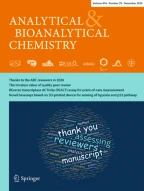Abstract
Oxidative transformation of cysteine thiol groups into different functional groups is considered a significant posttranslational modification of great importance in pathological and physiological processes. A cysteine sulfenic acid (SA) residue is the transient state for thiol group oxidation and it can react with free thiols to form disulfide bonds or can be further oxidized with reactive oxygen/reactive nitrogen species (ROS/RNS) to form sulfinic and sulfonic acids. The increase in ROS/RNS concentrations is correlated to age-related diseases such as cancer and Alzheimer’s disease. Since the formation of SA represents a transient state of oxidation of thiols, its formation can be considered a redox-sensitive sensor for the presence of ROS/RNS. Thereby, the detection of the short-lived SA will provide greater insight into the redox-mediated events that alter the structure and function of peptides and proteins. The aim of this study is to provide a new strategy for the highly sensitive and specific detection of SA in peptides as a proof of concept. For this aim, SA was firstly generated in model peptides on oxidation with H2O2 and then captured by the linear alkyne β-ketoester (KE) previously linked to a lanthanide (Ln)-containing chelator (Ln-DOTA, where DOTA is 1,4,7,10-tetraazacyclododecane-1,4,7,10-tetraacetic acid). The linking of the KE to DOTA was performed by click chemistry, resulting in a new reagent (Ln-DOTA-KE) that permits highly sensitive elemental (inductively coupled plasma) and molecular (electrospray) mass spectrometric detection. The new reagent (Ln-DOTA-KE) reacts specifically with SA, offering improved reactivity at physiological pH, facile derivatization and a cell-membrane-permeable compound that has promising future applications.
A new derivatizing reagent for specific detection of sulphenic acid (SA) generated in model peptides by oxidation of cysteine groups is presented in this work.
Similar content being viewed by others
References
Arnelle DR, Stamler JS. NO+, NO, and NO- donation by S-nitrosothiols: implications for regulation of physiological functions by S-nitrosylation and acceleration of disulfide formation. Arch Biochem Biophys. 1995;318:279–85.
Forman HJ, Fukuto JM, Torres M. Redox signaling: thiol chemistry defines which reactive oxygen and nitrogen species can act as second messengers. Am J Physiol Cell Physiol. 2004;287:C246–56.
Suh YA, Arnold RS, Lassegue B, Shi J, Xu X, Sorescu D, et al. Cell transformation by the superoxide- generating oxidase Mox1. Nature. 1999;401:79–82.
Charles RL, Schrӧder E, May G, Free P, Gaffney RP, Wait R, et al. Protein sulfenation as a redox sensor: proteomics studies using a novel biotinylated dimedone analogue. Mol Cell Proteomics. 2007;6:1473–84.
Dalle- Donne I, Carini M, Orioli M, Vistoli G, Regazzoni L, Colombo G, et al. Protein carbonylation: 2,4-dinitrophenylhydrazine reacts with both aldehydes/ketones and sulfenic acids. Free Radic Biol Med. 2009;46:1411–9.
Qian J, Wani R, Klomsiri C, Poole LB, Tsang AW, Furdui CM. A simple and effective strategy for labeling cysteine sulfenic acid in proteins by utilization of ß-ketoesters as cleavable probes. Chem Commun. 2012;48:4091–3.
Martínez-Acedo P, Gupta V, Carroll KS. Proteomic analysis of peptides tagged with dimedone and related probes. J Mass Spectrom. 2014;49:257–65.
McCall MJ, Diril H, Meares CF. Simplified method for conjugation macrocyclic bifunctional chelating agents to antibodies via 2-iminothiolane. Bioconjug Chem. 1990;1:222–6.
Ahrends R, Pieper S, Kühn A, Weisshoff H, Hamester M, Lindemann T, et al. A metal-coded affinity tag approach to quantitative proteomics. Mol Cell Proteomics. 2007;6:1907–16.
Schwarz G, Beck S, Weller MG, Linscheid MW. MeCAT—new iodoacetamide reagents for metal labeling of proteins and peptides. Anal Bioanal Chem. 2011;401:1203–9.
Esteban-Fernández D, Scheler C, Linscheid MW. Absolute protein quantification by LC-ICP-MS using MeCAT peptide labeling. Anal Bioanal Chem. 2011;401:657–66.
El-Khatib AH, Esteban-Fernández D, Linscheid MW. Inductively coupled plasma mass spectrometry- based method for the specific quantification of sulfenic acid in peptides and proteins. Anal Chem. 2014;86:1943–8.
Hong V, Presolski SI, Ma C, Finn MG. Analysis and optimization of copper- catalyzed azide- alkyne cycloaddition for bio-conjugation. Angew Chem Int Ed. 2009;48:9879–83.
Presolski SI, Phong Hong V, Finn MG. Copper-catalyzed azide-alkyne click chemistry for bioconjugation. Curr Protoc Chem Biol. 2011;3:153–62.
Yadav JS, Reddy BVS, Krishna AD, Suresh Reddy C, Narsaiah AV. Triphenylphosphine: an efficient catalyst for transesterification of β ketoesters. J Mol Catal A Chem. 2007;261:93–7.
Kretschy D, Koellensperger G, Hann S. Elemental labelling combined with liquid chromatography inductively coupled plasma mass spectrometry for quantification of biomolecules A review. Anal Chim Acta. 2012;750:98–100.
López-Fernández L, Blanco-González E, Bettmer J. Determination of specific DNA sequences and their hybridization processes by elemental labeling followed by SEC-ICP-MS detection. Analyst. 2014;139:3423–8.
Housecroft C, Sharpe AG. Inorganic chemistry. 2nd ed. Prentice Hall; 2004.
Drahos B, Kubicek V, Bonnet C, Hermann P, Lukes I, Tóth E. Dissociation kinetics of Mn2+ complexes of NOTA and DOTA. Dalton Trans. 2011;40:1945–51.
Bünzli JG. Benefiting from the unique properties of lanthanide ions. Acc Chem Res. 2006;39:53–61.
Wang Q, Chan TR, Hilgraf R, Fokin VV, Sharpless KB, Finn MG. Bioconjugation by copper(I)-catalyzed azide-alkyne [3 + 2] cycloaddition. J Am Chem Soc. 2003;125:3192–3.
Hong V, Udit AK, Evans RA, Finn MG. Electrochemically protected copper(II)-catalyzed azide-alkyne cycloaddition. Chembiochem. 2008;9:1481–6.
Liu PY, Jiang N, Zhang J, Wei X, Lin HH, Yu XQ. The oxidative damage of plasmid DNA by ascorbic acid derivatives in vitro: the first research on the relationship between the structure of ascorbic acid and the oxidative damage of plasmid DNA. Chem Biodivers. 2006;3:958–67.
Carr SA, Biemann K. Identification of posttranslationally modified amino acids in proteins by mass spectrometry. Methods Enzymol. 1984;106:29–58.
Acknowledgements
This work was financially supported by the Deutsche Forschungsgemeinschaft (German Research Foundation). M.S. acknowledges the graduate program of the School of Analytical Sciences in Adlershof (SALSA) for funding through scholarship.
Author information
Authors and Affiliations
Corresponding authors
Ethics declarations
Conflict of interest
The authors declare that they have no conflict of interest.
Rights and permissions
About this article
Cite this article
Sharar, M., Saied, E.M., Rodriguez, M.C. et al. Elemental labelling and mass spectrometry for the specific detection of sulfenic acid groups in model peptides: a proof of concept. Anal Bioanal Chem 409, 2015–2027 (2017). https://doi.org/10.1007/s00216-016-0149-x
Received:
Revised:
Accepted:
Published:
Issue Date:
DOI: https://doi.org/10.1007/s00216-016-0149-x
